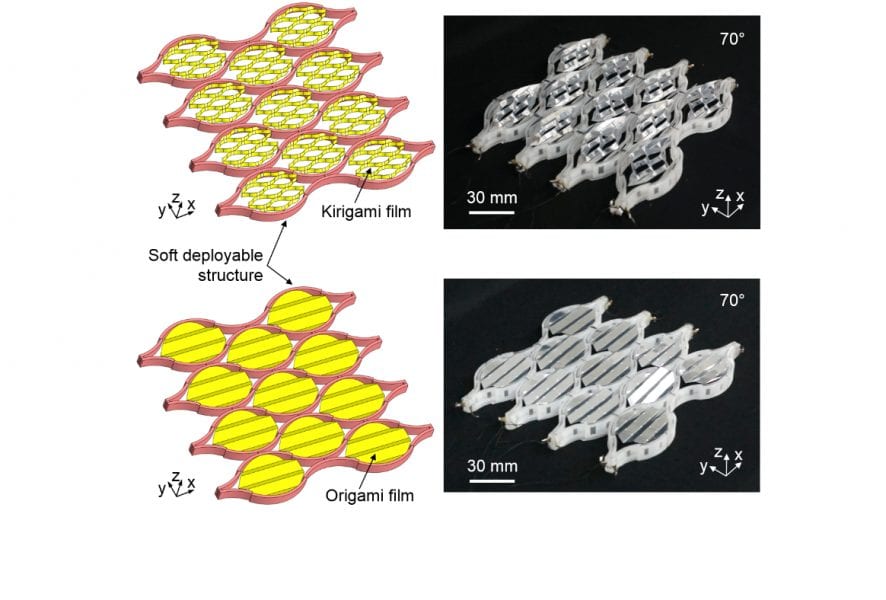Redirecting incident light towards a specific direction is a basic feat of engineering useful for large applications, such as redirecting sunlight onto solar panels or to provide greater illumination in a household, and for smaller applications, such as in optical systems for various sensing and imaging applications ranging from astronomy to networked vehicles. Beam steering mechanisms are the driving mechanisms that control the direction towards which the beam is redirected, and this category of mechanism has taken many shapes ranging from bulky mechanical systems to diffractive gratings. Their wide range of application has been the driving force for the development of a wide range of engineering solutions at all scales.

Kirigami/Origami-based soft deployable reflectors and their performance of optical beam steering.
Now, Wang and Ahn et al. from Seoul National University have described a new type of soft deployable reflector combining a soft deployable structure with simple kirigami/origami reflective films. This soft deployable structure can self-deploy by expanding its length several folds in a continuous and controllable manner. This deformation can be used for beam steering using the embedded kirigami/origami structures, which require a large linear strain to change their reflective angle as provided by the soft deployable structure. The soft deployable structure is a combination of shape memory alloy wires, a smart material that deforms when heated, and of a polymeric matrix that is positioned in a scalable repeating pattern of sub-structures that deform in a sinusoidal shape. The deformation of this overall structure produces a contraction in one direction and an expansion in the other. Origami/kirigami-based reflectors, essentially mirrors with slits, are placed in hollow pockets of the soft deployable structure whose large deformation changes the reflection angle of the reflectors.
The design of the proposed work published in Advanced Functional Materials is implementable at macro and micro-scales by exploiting the scale-free geometric characteristics of the soft deployable reflectors, resulting in a simplified route for the design of active beam steering devices over a wide range of dimensions.

















